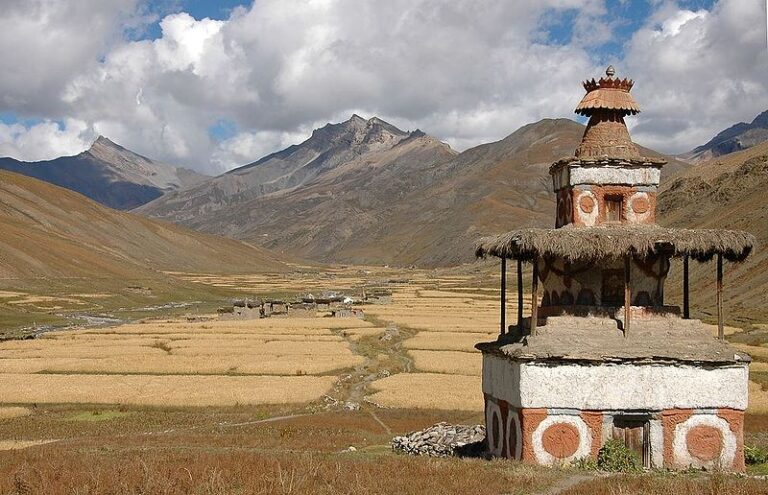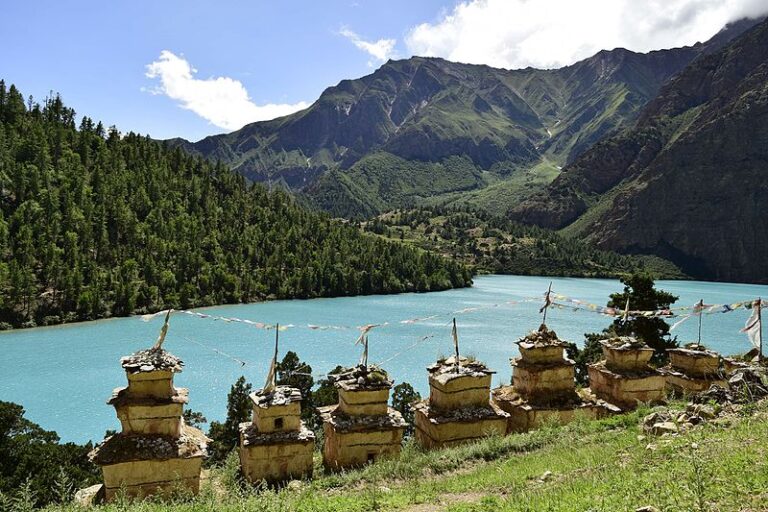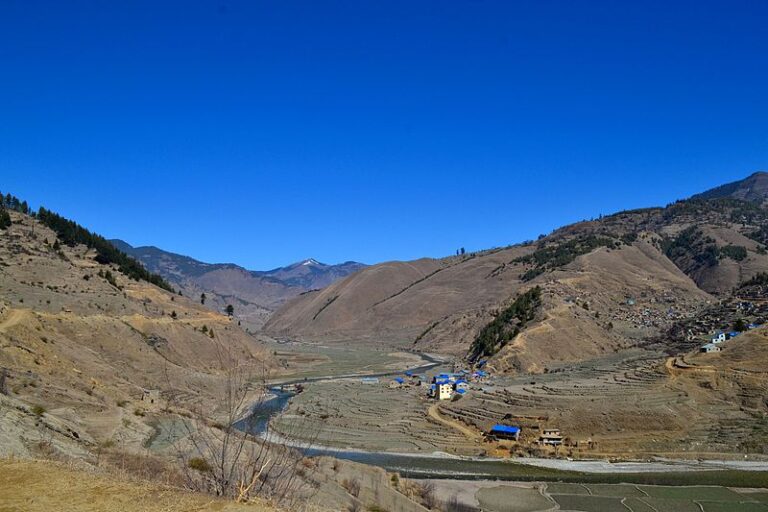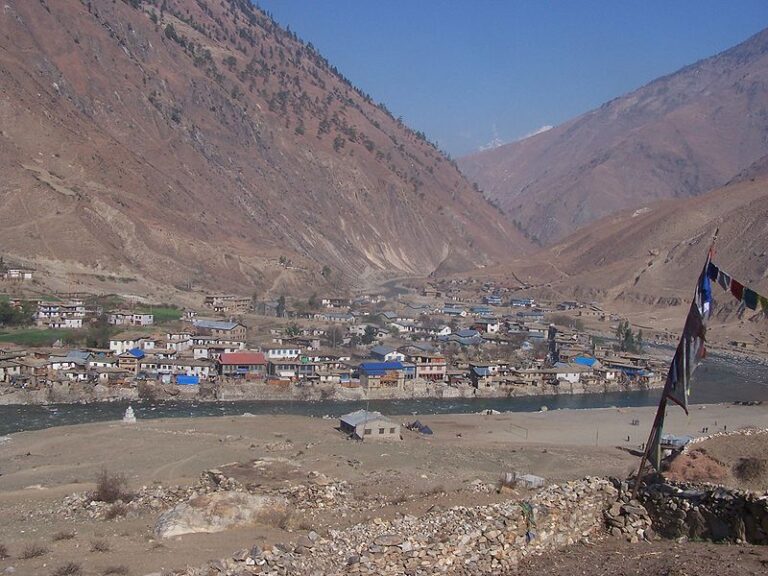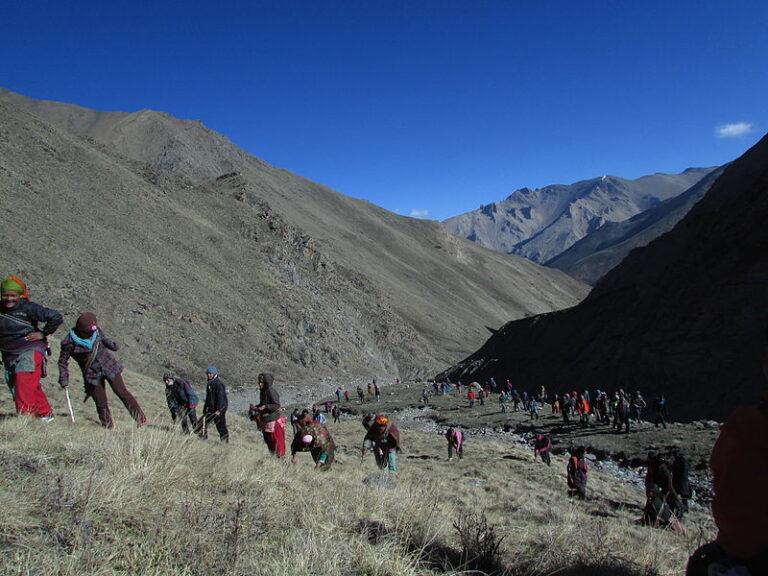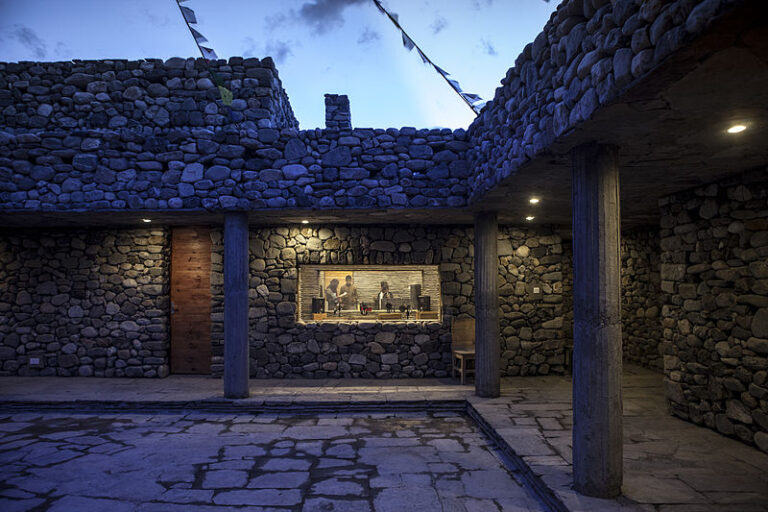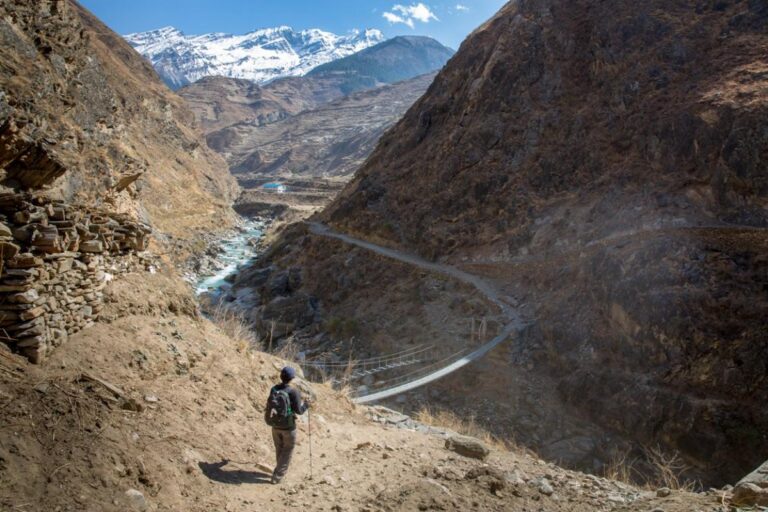Day 01 – Arrive Kathmandu (1300m.a.s.l) – we will pick you up from the international airport in Kathmandu then transfer to Hotel. Your hotel would be around the Thamel, which is one of the tourist hubs of Kathmandu valley.
Day 02- Full day Kathmandu City excursion – sight seeing to the world heritage sites in Kathmandu such as Pashupatinath (Hindu shrine) Baudhanath Stupa (Buddhist monuments) Swayambhunath (Buddhist and Hindu shrine) and Kathmandu Durbar squire.
Day 03 – Fly from Kathmandu – Nepalgunj and transfer to Hotel – half an hour scenic flight, we will be in Nepalgunj, which is the Terai region of Nepal so the temperature would be a little bit hot and humid. After transferring to Hotel we will explore the Nepalgunj bazaar and some of the Hindu temple then stay one overnight in Nepalgunj.
Day 04 – Fly to Jhupal and trek to Sulighat (2070m.a.s.l) – 3 hours walk – After a joyful night in Nepalgunj, we will fly for Jhupal airport which may take about 45 minutes. During the flight we will see a massif view of Dhaulagiri and Annapurna mountain ranges to the north. Our first day’s trek begins with an hour downhill trek through the village and terraced field to the Bheri River. The major attraction of the day would be the view of the terraced field, Bheri river valley, charms landscapes, Phoksundo river valley, and huge long suspension bridge; which is hanging over the Bheri River.
Day 05 – Trek to Renje (3010m.a.s.l) – 6 hours walk – we will cross the Bheri River to the west bank and the trail lead us through the Raktang and Jyalhasa village pass by header’s hut and yak pastures.most of the time we will do up and downhill trail, walking beside the River valley so the major attraction of the day would be the view of river valleys, landscapes, waterfalls and the beautiful village and activities of local peoples. We will set up our tent in Renje and spend overnight in Renje.
Day 06 – Trek to Phoksundo Lake (3620m.a.s.l – 6 hours walk) – begins of the trek we will ascend for a while to get a small ridge and descend to the confluence of Phoksundo and Phungmo River. After the confluence the trail lead us to Sumduwa village, yellow roofed building which a Tibetan school for Tibetan refugees. From the school, the trail eventually leaves through the silver birch forest, traverses a grassy slope, and a beautiful view of waterfalls and hanging prayer flags to get Phoksundo lake.
Day 07 – Rest day in Phoksundo Lake and explore around Ringmo village – it would be a good idea to have a rest day after three days of the hard walk but still, there are numerous of interesting things to see around the lake such as Thasung Chholing monastery, beautiful Ringmo village, charms landscapes, Tibetan turquoise and Phoksundo Lake which is the deepest lake of Nepal.
Day 08 – Trek to Phoksundo Khola (3630m.a.s.l) – 5 hours walk – we will start trek just shore of the Phoksundo Lake heading by the west bank of the campsite. The trail lead us through suspended on a gangway of wood supported on pegs driven into crevasse in the rocks, signals the remoteness of the area. at the westernmost edge of the lake, the path leads through a lush meadow that opens up into the flood plain of Phoksundo Khola, and after a short walk from the Phoksundo Khola may appear a grassy land where we will set our tent to spend the night.
Day 09 – Trek to Phoksundo Bhanjyang (4120m.a.s.l) – 7 hours walk – begins of the trek we will walk on the level trail through a glacial valley heading by northern part to the confluence of the Phoksundo Khola and another small stream. From here the distinct trail leads us to the northeast of the valley. A long climb from the small stream brings us to a sheep meadow where the trail veers up a steep ravine. A hard climb to the top brings to yet another valley where one can see the Kang – La pass, which leads us to Shey Gompa.
Day 10 – Trek to Kang-La pass 5160m – Shey Gompa (4390m.a.s.l) – 5 to 6 hours walk – begins of the trek we will ascend steep climb littered with slate towards to Kang-La pass, while we are climbing we have to be very careful due to strenuous and slippery slate screed. From the top of the Kang_la pass we will descend to the valley floor with an excellent view of Gushing river valley and breath taking landscapes. When we will descend to the Gushing river the trail lead us through a long meandering trek along the bank of the river. During the trek we will see numerous mud lining caves, grassy land, meadows, red Chhorten, and Shey Gompa. We will set our tent in the compound of Shey Gompa and spend overnight in Shey Gompa.
Day 11- Rest day at Shey Gompa – Shey Gompa is also known as crystal monastery; which is well described in Peter Mathieson classic novel snow leopard. There is another famous monastery nearby the She Gompa like Tsakang Gompa; which is located north side of She. It is rather a retreat than a monastery. Tsakang had been a meditation center of many famous lamas from Tibet. Shey Gompa belongs to the Chaiba community, followers of great saint Padmasambhava, known as Guru Rinpoche and Kagyu sector of Buddhism. Apart from Religious sites we will explore the ancient village and neighbor hillock to see breath taking landscape views.
Day 12 – Trek to Namgung village- cross over the Saldang -La pass (4430m.a.s.l) – 7 hours walk – we will descend through a pleasant trail amidst Juniper into a grey, stony canyon and steep climb bring us to top of the Saldang-La pass which is 5200 meters and offers to see charms landscapes and deep valleys. From the top of the Saldang -La pass the subsequent descend command us to walk on a grassy land where can be seen grazing hairy Yaks, sheep, and mountain goats and it means we are approaching quickly to Namgung Gaun (village) where we will explore the Namgung monastery which belongs to Karma-Pa sector of Buddhism. The Namgung village is consists of only six houses and has a terraced field on both sides of the tributary. The economic base of villagers is agriculture, animal husbandry, and trading. We will set up our tent at Namgung village and stay one over night.
Day 13 – Trek to Saldang (3620m.a.s.l) – 5 hours walk – Three hours of hard climb from Namgung we will be top of the Saldang which is one of the picturesque areas of the region, command us to see breath taking natural beauties. Saldang village belongs to the arid zone of the trans-Himalayan Tibetan plateau and consists of the five villages, having about eighty well-built houses with nearly six hundred people. Saldang village is not only good for agriculture but also good for a strategic location for the trade route with Tibet.
Day 14 – Trek to Yangji Gompa (4960m.a.s.l) – 5 hours walk – from Saldang village, our journey diverts into the north side, which is less explored by western tourists and local trekkers. The trail leads through the Nang Chu River pass by wild barren windswept terrain. Along the day we will pass by small settlements called Tiling and Luri Gaun. Yangji is one of the less explored places of the region where trekkers can visit an old monastery which belongs to Bon-Po religion.
Day 15 – Trek to Sibu (4560m.a.s.l) – 7 hours walk – we will head to the west part of Yangji Gompa pass by remote villages of Nishal Gaun and further past Shimegoun. From Shimegoun we will trek back to Saldang village to save time and energy. From Saldang village we will walk beside the river to get Namdo monastery with the view of terraced field, Stupa, Chhorten, heaps of Mani stone walls, and a Chaiba Monastery. From Namdo village we will walk approximately two hours to get Sibu village where we will set up our tent and spend one overnight at Sibu Village.
Day 16 – Trek to Jeng La phedi (4900m.a.s.l) – 6 hours walk – begins of the trek we will walk just bank of the Nam Khong river to get the confluence of two small tributaries then the trail gently ascends to the Jeng la. While climbing up to Jeng La we have to be very careful due to walk together with hundreds of yaks which are on their way to Tibet border. We will set up our tent at Jeng La and spend a pleasant night with trekking crews.
Day 17 – Trek to Dho-Tarap (4080m.a.s.l)- 7 hours walk– the trail gently ascends from the camp site to get Jeng La pass which may takes approximately two hours. From the top of the Jeng La pass can be seen excellent view of snowy ranges emerges to the south and north face of Dhaulagiri mountain. From the top of the Jeng La pass the trail descends to the Tarap valley. Tarap is a fascinating valley with vast plains in high mountains. There are many interesting things to see around the Dho Tarap village such as beautiful terraced field, colorful Stupa, Chhortens, and Tokyu monastery. We will set up our tent at Dho Tarap and spend a joyful night.
Day 18 – Exploration of Dho – Tarap village – Dho Tarap is consists of several clusters of closely packed some houses and corrals and surrounded by the agricultural field where can grow the naked barley, garlic, and cabbage. Early in the morning we will explore the Dero Gompa, Shipchok Gompa, and a Bon-Po school; which are located eastern part of the Dho Tarap village. After Lunch we will explore a beautiful Gompa called Ribo Bhumpa Gompa above the village was built in 19555 and nearby the Gompa can be seen a unique Chhorten containing the remains of a demon killed by Guru Rinpoche.
Day 19 – Trek to Tarap Khola (3800m.a.s.l) – 7 hours walk – we will walk along the juniper bush and wild rose, typical of dry inner Himalayan valleys, to just above the tree line. On this route we might see herds of blue sheep. By the afternoon time we reach the confluence of the Tarap Chu and the Lang Khola, a stream that joins with Tarap River from further east. We will make our camp on a nice meadow, this place is also known as Karmakharka 3,800 m, while our porters will perhaps take shelter in a nearby spacious cave.
Day 20-Trek to Khani Gaun (3150m.a.s.l) -6 hours walks – begins of the trek the trail leads us to the down gorge of the Tarap River, at times alongside it, rising high above on a trail built from the steep slopes might come across people from Dolpo taking their herds to lower pastures for the winter. There are many possible campsites by the river. This will be one of the exciting days of this trip walk, as the valley becomes so narrow in a deep gorge that in some places we can jump from one side to another. Sometimes there is no trace of any path and we have to walk across stone slabs fitted on logs in between the walls; which act as a bridge. Finally, reaching to the camping spot beside the Tarap Khola at Khani Gaun and set up the tent for the joyful night.
Day 21 – Trek to Dunai (2030m.a.s.l) – 6 hours walk – the indistinct trail lead us to Lalberi village pass by an area of impressive forest, beautiful gorge, colorful terraced field. We will have our lunch at Tarakot trek continues beside the Bheri River in a tremendous gorge with pine trees and an ingenious path built about seven meters above the river.
Day 22 – Trek to Jhupal (2320m.a.s.l) -3 hours walks – we will do short trek along the Bheri River to get Jhupal and after completing our trek the evening might be full of celebration.
Day 23: Fly from Jhupal – Nepalgunj – Kathmandu – we will fly thirty-five minutes to get Nepalgunj with the view of Annapurna and Dhaulagiri mountain ranges. On our arrival at Nepalgunj we will have a short rest and fly back to Kathmandu.
Day 24 – Final departure – After a successful trip of Upper Dolpo trek, you will fly to your homeland with great experience of Nepal and many tales about colorful people, their culture, and unique costumes which makes you a storyteller among your friends and colleagues.
